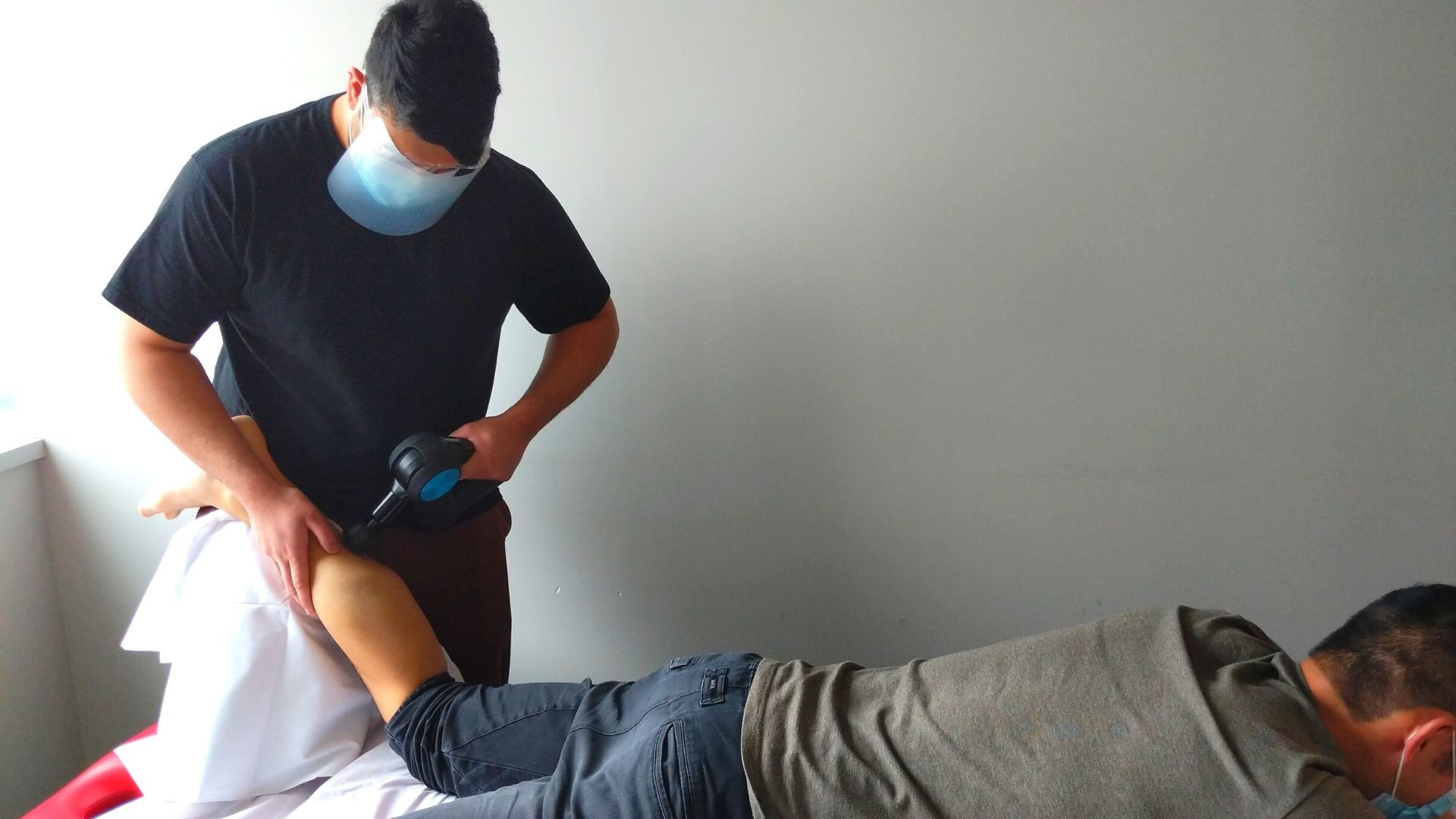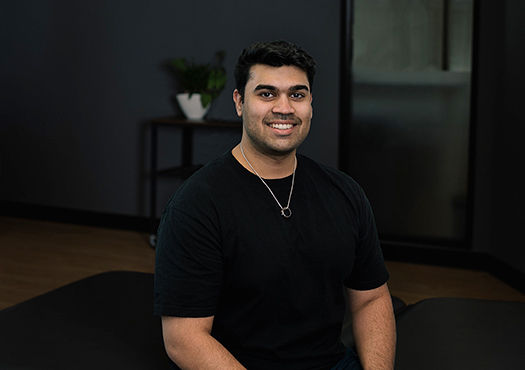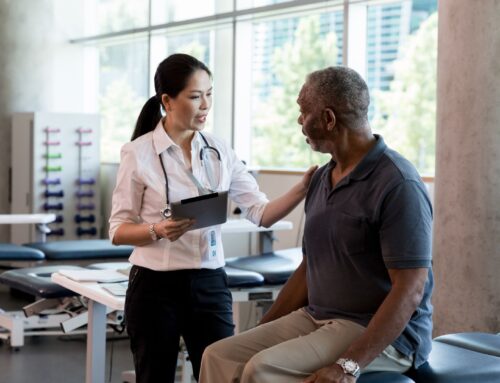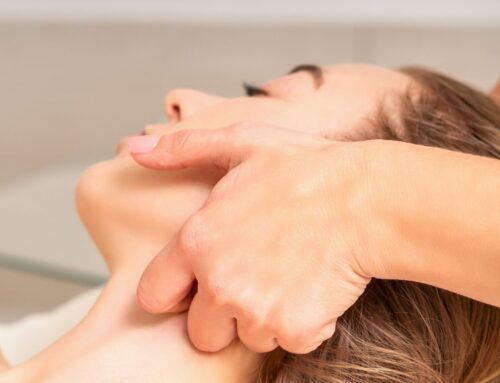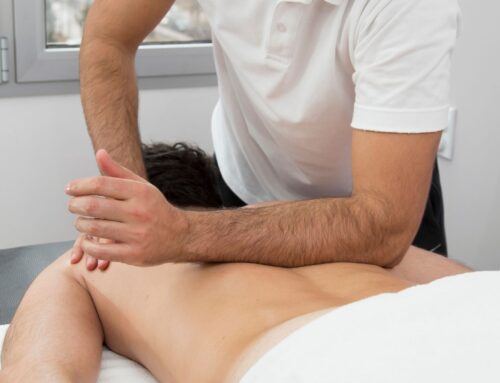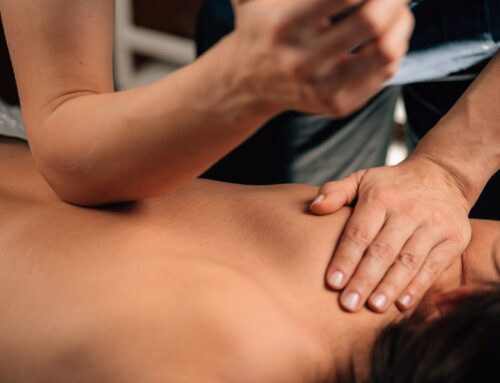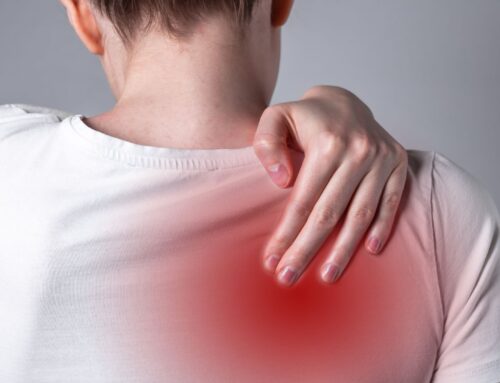Percussive therapy is not a new concept in the world of massage therapy. However, the attention around it has grown in the last year with the launch of advertising around a popular device called the Theragun.
At Propel Physiotherapy, our team of registered massage therapists use percussive therapy devices in combination with other massage therapy techniques, where it is appropriate and can be an effective treatment. In this article, I examine the benefits of percussive therapy, what it can and can’t treat, as well as the potential side effects.
What is Percussive Therapy?
During localized percussive therapy, your therapist will place a handheld device on a specific part of your body. The device is designed to provide pulsing pressure of varying intensities to a localized region similar to the tapotement techniques already used by massage therapists, but at a much faster rate. This causes the muscles to relax quicker and more easily than with manual techniques.
What are the Benefits of Percussive Therapy?
The leading benefits of percussive therapy are an increase in blood circulation to the local region, reduced muscular tension and soreness, and joint structure mobilization.
Within massage therapy, RMTs use a variety of manual techniques, as well as tools, to provide their patients with a higher level of treatment. Percussive therapy devices are one of the most versatile and simple tools that add another level of support to massage therapists when treating their clients.
What Does Percussive Therapy Treat?
A study by Zubia Veqar and Shagufta Imtiyaz, published in the Journal of Clinical and Diagnostic Research, states that percussive therapy is an effective modality of treatment and rehabilitation for those experiencing DOMS (Delayed Onset Muscle Soreness) in both the non-athletic and athletic population. Furthermore, the results demonstrated how this form of therapy is effective in increasing flexibility and explosive power in individuals.
Frozen shoulder is a great example of a condition that is better treated with percussive therapy. The percussion helps to reduce stiffness and alleviate tension in the surrounding structures of the shoulders and scapula, allowing massage therapists to properly mobilize the joints.
Similarly, muscle guarding and holding patterns observed in patients can significantly hinder a massage therapist during treatment. Massage guns provide an easy and effective solution to patients who have difficulty relaxing and letting go; the high frequency percussion exhausts the muscles faster than conventional massage techniques.
There are many benefits associated with percussive therapy, however this style of treatment is not always indicated. The following is a list of some symptoms where the use of percussion is not indicated include:
- during bone reformation/union phase of recovery
- vertigo
- acute to sub-acute concussions
- tinnitus
- allodynia
- any significant bruising
- migraines/headaches
Side Effects of Percussive Therapy
There are a few side effects that should be monitored during percussive therapy, such as excessive itchiness and overstimulation of structures. Sometimes temporary itchiness is experienced during therapy due to the sudden increase in blood flow to the treated area; similar to the sensation felt when running your hand under hot water after being outside on a cold, winter day. However, prolonged itching is abnormal – this can be a sign of overstimulation of the area.
Overstimulation can also be recognized when the client experiences increasing pain and soreness; it is a therapist’s responsibility to make sure they are working within the tolerance level of the patient, keeping lines of communication open to assure that these side effects do not occur.
Massage Therapy Combined with Percussive Therapy
Massage therapy is a treatment intervention that aims to, among other things, increase circulation of blood and lymph in the body, reduce muscular tension and pain, increase joint mobility, and encourage healing. It can be an effective method of treatment for many musculoskeletal conditions and a great way to maintain one’s overall health.
Massage therapy combined with tools like percussive devices put therapists in a better position to treat musculoskeletal conditions. They reduce the amount of time needed to alleviate tension in a region during treatment, which allows more time during a session to work more specifically in the areas that are causing pain.
Written by

